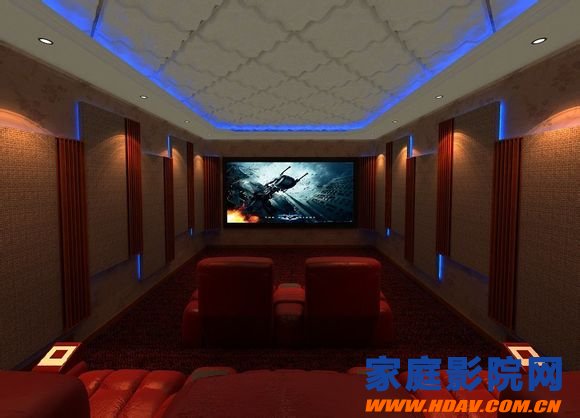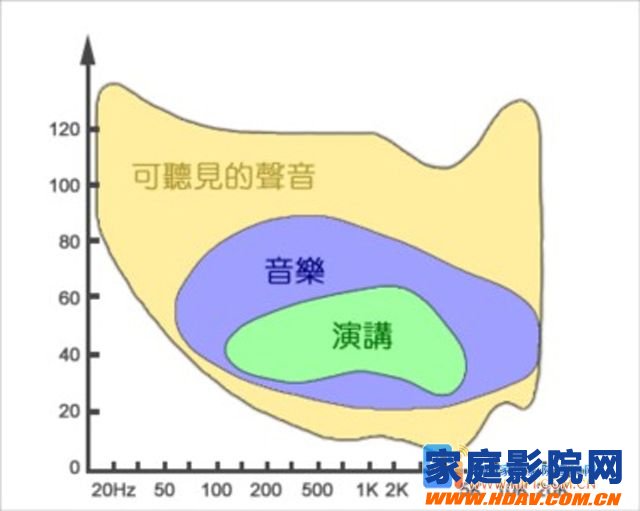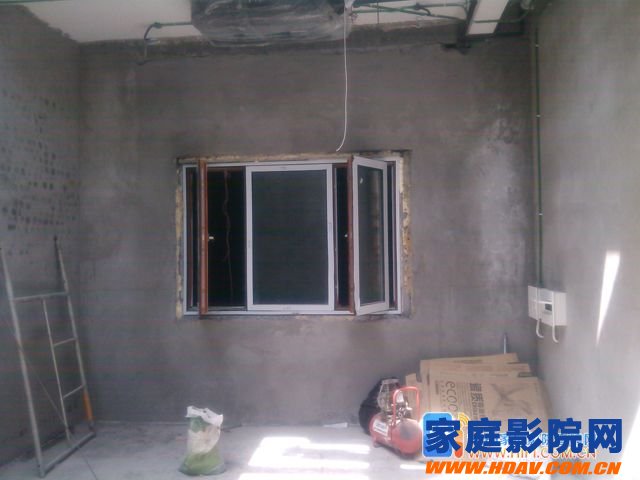[Home Theater Network] When we carry out home theater audio-visual room decoration, we will inevitably encounter the problem of "acoustic reflection". How to control and deal with the "acoustic reflection" in the audio-visual room to obtain good acoustic effects is a very important issue. .

Before you understand how to control the indoor reflected sound, you must first clear the object to be processed. You may be wondering, isn't the object that needs to be processed "reflex sound"? Yes, but if you think about it more deeply, is it that all the "reflex sounds" of frequency need to be controlled and processed? This involves To a basic acoustic concept, the frequency of the sound.

The sound frequency that the human ear can perceive is 20Hz-20kHz. We usually divide the frequency range of this sound into three frequency bands: low frequency, medium frequency and high frequency. From a physics point of view, the wavelength of the low frequency is much longer than the wavelength of the medium and high frequencies. Then, for small and medium-sized indoor "audio-visual room design", a low-frequency sound wave that has not completed one cycle of vibration will be hindered by obstacles, and the low-frequency sound wave has been interfered before the reflection. In this case, the sound will "diffract", which is commonly referred to as "diffraction", that is, the low-frequency sound will bypass the obstacle propagation without following the traditional geometric acoustic reflection principle. Therefore, the low frequency requires more special room acoustic processing. Then, the analysis of the reflected sound in the audio-visual room is mainly directed to the middle and high frequencies of the sound.

The intermediate frequency subdivision of sound can be divided into medium and low frequency, medium frequency and medium frequency. The middle and low frequency is a kind of imposing feeling, and the corresponding instruments are mainly drums, such as bass drums and timpani drums. In addition, the partial range of the piano and double bass can also better present the mid-low frequency of the sound; the sound quality of the intermediate frequency is relatively thick, and the instrument corresponds to the harp, the viola, the various tonal trombone, etc.; Can experience the most detailed frequency band, the sound quality is brighter, trumpet, violin, jazz number and so on. In addition, the tooth sounds of human language, most of the airflow sounds are also in the middle and high frequencies.
The sound quality of high-frequency sound is clearer, and it is often expressed as the noise of the instrument, such as the conversion of a string instrument from one string to another, and percussion instruments. The metal feel of some percussion instruments is the embodiment of ultra-high frequency sound quality. It can be seen that understanding the different characteristics and needs of the sound and the high frequency can only be followed when controlling and processing the indoor reflection sound. Through the subjective feelings of the sound quality of medium and high frequency sounds, it is more conducive to the overall creation of the indoor sound field.

Of course, 20Hz and 20kHz are not clear boundaries if they are to be analyzed from the characteristics, effects, and subjective perceptions of sound waves. For example, ultra-low frequency (below 20Hz) is just the frequency of human physiological perception. When the "Shenzhou VII" spacecraft is in the sky, it will be disgusting and vomiting. This is the effect of ultra-low frequency on the body at around 8Hz. Another example is the lighting in the "audio room", such as fluorescent tubes. The ultra-high frequency (20MHz) noise generated by the ballast during operation can sometimes be perceived by the ear and can cause an uncomfortable feeling. Long, pure ultra-low frequency or ultra-high frequency does make people feel uncomfortable. However, if they exist at the same time as the low, medium and high frequencies of the sound, they can play a role in making the sound quality more realistic and full. When people enjoy piano solo in the concert hall, the translucent and empty inspiration in the high-pitched area of ​​the piano always brings us a pleasant feeling. This is the relationship between some ultra-high-frequency overtones of the piano in the air; and we When watching a war-themed movie in the audio-visual room, the fierce scenes in combat often cause the sofa we are sitting to vibrate together. This vibration is caused by the ultra-low frequency of the sound. Along with the vibration of ultra-low frequency, we are often shocked by the movie scene and easier to understand the connotation of the film.
It can be seen that the ultra-low frequency and ultra-high frequency of the sound add a lot to the music or movies we admire. However, the range of sound frequencies we discuss here is based on the range that the “human ear†can distinguish and the corresponding feelings. This is also the most effective and important sound frequency for us to create an indoor “audio room design†acoustic environment. range.

It is clear that the object of the indoor reflection sound is the middle and high frequency of the sound, and we can return to the control and processing method of the reflected sound problem. When we face an empty room with no walls, side walls and floors that are completely untreated, how can we control the reflection and reverberation? We will discuss in detail in the next issue, and the home theater audio-visual room decoration will solve the indoor sound. The method of reflecting "problem": "How to solve the problem of "sound reflection" in the home theater video room (2)".
Led Surface Panel Light,Direct-Lit Led Panel Lamp,Direct-Lit Led Panel Light,Surface Mounted Panel Light
Changxing Fanya Lighting Co.,Ltd , https://www.fyledlights.com